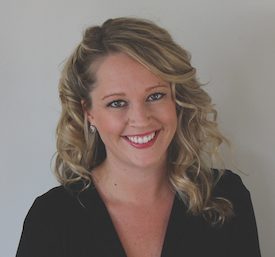Since its inception in July 2011, the CFPB has set out on a mission to oversee financial products and services for consumers to ensure fair and transparent practices. While its progress to date in achieving this mission might be debatable, what is certain is that the bureau’s efforts thus far have already had a significant impact on the financial services industry. As many in this sector attempt to adhere to new regulations enacted by the agency, they have seen the cost of business skyrocket as they spend time and money grappling with mounting compliance concerns.
In March, the CFPB acknowledged these concerns in a blog post that promised to investigate the expense of complying with financial regulations. “Regulations can have many benefits for consumers, but the benefits sometimes come at a cost,” the post conceded, adding that the bureau’s research teams will start talking to banks across the country about costs incurred, beginning with those that deal with deposit products and services. While the CFPB said it will consider these costs and weigh them against consumer benefits, it’s unlikely that the investigation will yield any significant change in the near term, at least. (In an email to The Reverse Review, the agency declined to comment on its progress.)
When it comes to compliance concerns, reverse mortgage companies are no different than other businesses in the broad financial services sector. In this heightened regulatory environment, reverse lenders big and small are feeling the effects as they struggle to adjust to a new way of doing business.
An Unsustainable Path
After months and months of frustration over the ever-changing regulatory environment, many in the reverse industry agree that something has to give. Jim Milano, an attorney at Weiner Brodsky Kider who specializes in compliance issues for reverse mortgage lenders, says the situation is becoming unmanageable: “The cost of compliance is going up and, based on current trends in the forward sector, the mortgage industry is on an unsustainable path.”
Most of the CFPB’s recent rulemaking thus far has hit the forward market the hardest. Milano says these regulations are bound to take a serious toll on mainstream mortgage lending. “In the forward mortgage industry, new requirements regarding ability to repay and qualified mortgages will undoubtedly constrain mortgage credit,” he says. “And the 3 percent points and fees threshold, which cannot be crossed if one is to make a qualified mortgage, and the APR test that must be met in order to satisfy the qualified mortgage safe harbor, are nothing short of ‘backdoor’ price controls on mainstream, forward residential mortgage loans. We have not had price controls in the U.S. since World War II.”
While the reverse industry has managed to avoid many of the CFPB’s recent rules, like the Qualified Mortgage and Ability-to-Repay rules, that will drastically impact the forward sector, it has not escaped free and clear. “Reverse mortgage companies have still been hit with the same onslaught of new regulations that have also beset the forward mortgage industry over the past five years, including new SAFE Act requirements, Mortgage Call Reports and state audits and exams,” Milano says. “Not to mention a more aggressive audit and enforcement stance taken by HUD.”
The situation is unlikely to let up anytime soon. While the CFPB has focused most of its attention on the forward market thus far, the reverse sector can expect rules specific to the HECM market sometime in the next year.
Examining the Expense
While many agree that the cost of doing business has increased significantly in the face of new and pending regulations, some say it’s difficult to pinpoint an exact figure.
“A lot of it gets buried in operating costs,” says Mark Browning, CEO of New York-based reverse mortgage lender HomeChex. “From a measurement standpoint, just looking to direct costs doesn’t capture the whole thing.”
While Browning admits that some of the new rules—like the simplification of consumer disclosures—are instituting positive changes that will benefit both the consumer and industry in the long term, grappling with constant regulatory changes has taken a toll on profitability. “Collectively, all of the rules have created a very expensive operating environment,” he says. “I would say the cost of operation is two to three times what it once was.”
Browning says nearly a third of his time is spent addressing compliance concerns. He also says much of the problem comes down to the fact that heightened regulation has lengthened the amount of time it takes to close a loan. “We can’t extend a timeline by eightfold to move a product down the production line and not have much, much higher operating costs,” he says. “They’re allocated operating costs, but the reality is they are compliance costs.”
Milano acknowledges the difficulty reverse companies have in swallowing the extra expense. “It is easy to be sympathetic to an executive’s plight in this area,” he says. “In the world of cost accounting, compliance is a fixed cost, as opposed to a variable cost. If a company hired 10 new loan officers, the loan officers’ compensation would be an expense, however, some, if not all, of the loan officers would produce profitable loans that the company could sell. A compliance officer, on the other hand, is not going to make loans.”
Too Small to Comply
While larger reverse mortgage lenders must also grapple with regulatory expenses, smaller lenders with fewer resources are undoubtedly hit the hardest, giving credence to the concept that some companies may be too small to comply.
Jim Cory, of San Diego-based Legacy Reverse Mortgage, says that while compliance costs for his business are currently manageable, there is always the threat that they will grow beyond what a small lender can feasibly handle.
“The idea of ‘too small to comply’ is definitely a concern,” Cory says. “There’s just a gigantic number of things you need to watch closely.” Cory says the fear is that compliance-related work will grow so large that, at some point, the company won’t be able to afford to hire an attorney to assess regulatory risk while he continues to originate loans. “If I’m no longer originating mortgages, I no longer have the time to do the things that I need to do to make my business successful; I’m just working on compliance,” Cory says. “We’re not there yet, but that would be the danger.”
Cory says that if this becomes the case, the industry may see smaller entities leave the space. “At some point, smaller lenders and brokers could be pushed out of the business because there would be no feasible way for them to keep up.”
“Survive and You Will Thrive”
Milano agrees that small lenders have a tough job ahead trying to stay on top of regulatory change, but says that for now, there’s not much to do but tread on.
“While it is true that, until someone sells something, no one gets paid, not properly investing in compliance in the current environment could expose a company to undue risk and loss,” he says. “To the extent that they have not already started to do so, in thinking through this strategy, reverse mortgage executives must begin to view compliance as an investment and not merely an expense.”
Milano says that companies that can alter their mindset and start viewing compliance costs as a necessary investment in their businesses’ infrastructure will have a strong competitive advantage.
“If you can survive and get through this, and get on the other side, you’re going to thrive,” he says. “Because when you come through this, there’s going to be less competition out there. A lot of people aren’t going to be able to commit to what you’ve committed to do, which is to invest in your infrastructure and your enterprise at all levels—not just sales, not just technology, marketing and advertising, but also compliance.”
Five Steps Toward Compliance
By Jim Milano
When the CFPB focuses on new reverse mortgage rules and such rules come into effect, the reverse mortgage industry will have a new round of regulatory burdens and implementation challenges to deal with. Here are five steps that companies can take to assure an effective compliance management system:
1. Adopt a compliance culture from the top to the bottom. A company’s board of directors and executive management team must not only be aware of compliance issues, but also must direct the compliance function, which leads us to the next steps…
2. Create regulatory policies and procedures based on current law and regulations. There is no substitute (and no excuse) for not knowing the basic black letter of the law. A recitation of the laws applicable to a company’s operations (whether it merely originates, or also makes, funds, sells and services loans) should be contained in its policy statement documents. Many companies’ policies and procedures are contained in an online format so that company employees can easily access such materials and even participate in online training that can be tracked and tested.
3. Integrate written policies. A company must have written policies in place—not merely canned policy documents that sit on a shelf, but policies that are integrated into company operations and procedures. These policies must cover all regulatory and legal aspects that apply to and impact a company’s mortgage operations and its support functions, and should be reviewed and approved by the board of directors.
4. Train your staff. A company should train all of its staff on compliance requirements, especially its sales staff. Many companies utilize vendors, such as LOS systems, doc prep companies and outside quality control firms, which is customary, routine and acceptable in the mortgage business. However, while a mortgage company can outsource certain tasks that assist in the compliance function, the responsibility to remain compliant cannot be outsourced.
5. Develop a strong quality control (QC) and internal audit function. The internal audit function should report directly to the board of directors and should not be subject to supervision or oversight by the sales or operations functions of the company. The QC function should review loans, while the internal audit function should review the company’s overall operations and compliance with laws and regulations. Of course, these two functions should work together and coordinate their efforts. When the internal audit function detects problems, it should report those problems to the board, which should review the concerns and perhaps give the applicable department
an opportunity to respond. If the department questions the rule being reviewed, compliance or legal counsel should re-review the rule in question to assure the company’s policies and procedures are up to date. Then, if warranted, the board should direct that corrective action be taken.
All of this might sound like a great deal of work. Nonetheless, once these steps are institutionalized, they will become a routine part of a company’s overall operations and provide both a foundation and a feedback loop for a robust compliance program.
Finally, after hearing the above overview, one director at a recent board meeting turned to me with a question: “Are we in the mortgage business or the compliance business?” he asked.
The answer, for the next few years at least, is “Both.”





